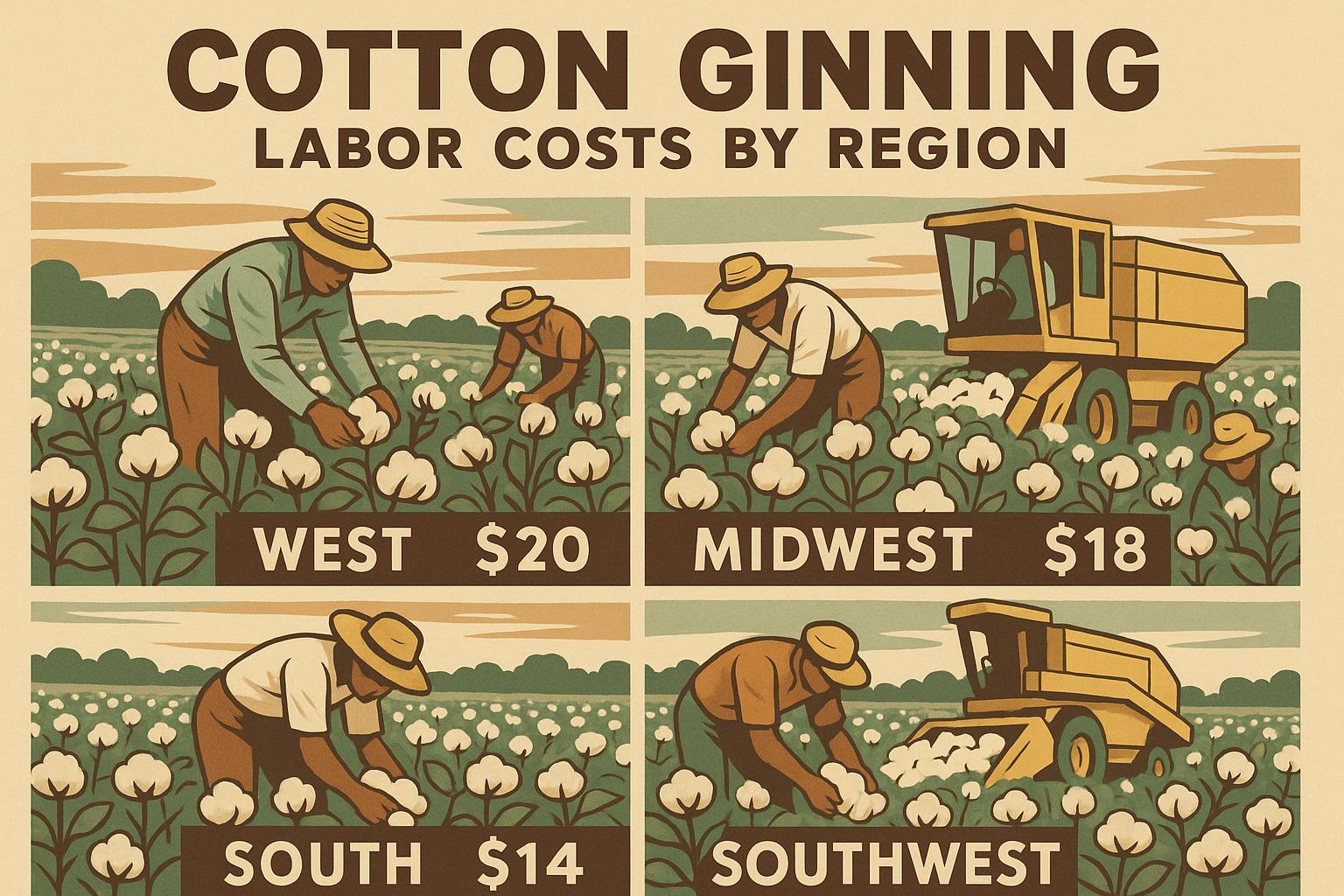Executive summary (TL;DR)
- Switch to twin row planting in cotton on sandy soils to boost plant density 15-20% without compaction issues, leading to faster canopy closure and 10-15% yield gains over single rows.
- Pair twin rows with variable-rate seeding for precise populations like 45,000-55,000 plants/acre; reduces erosion by 20% and cuts herbicide needs through better weed suppression.
- Monitor root development post-emergence in twin setups—stronger systems improve drought tolerance, adding resilience in variable weather without extra inputs.
Related Post: For foundational planting advice, check out our post on Cotton Precision Planting Techniques.
If you've been farming cotton long enough, you've probably stared down a field that's got great potential but just doesn't quite hit the mark—maybe erosion's eating at your sandy acres, or you're chasing that extra bale without piling on more seed or fert. That's where twin row planting in cotton comes in, a setup I've seen turn average ground into a steady performer. It's not some newfangled idea; it's been around, but with modern planters and varieties, it's delivering real edges in density, efficiency, and resilience without the headaches of ultra-narrow singles.
We're talking practical upgrades here, the kind backed by extension trials from Texas A&M to Arkansas. No fluff—you know your row units and populations cold. This is about why twin rows might fit your operation, pulling from university data on yields, soil health, and costs. I'll break down the benefits, setups, and tweaks so you can weigh if it's worth retooling for next season. Let's dig in, row by row.
What Makes Twin Row Planting Stand Out
Twin row planting stacks two rows close—typically 7.5-10 inches apart—on 30-40 inch centers, bumping density without squeezing the whole field narrow. Unlike single 38-inch rows, it packs 15-20% more plants per acre, per Oklahoma State studies, while keeping traffic lanes wide for equipment.
Why the buzz? Singles limit population; ultra-narrow (15-20 inches) compact soil and tangle harvest. Twins split the difference: Better light capture, air flow, and root spread. A long-term Georgia trial showed twins outyielding singles by 100-200 lbs lint/acre in variable soils, thanks to even stands and boll distribution.
For your farm: If erosion or uneven moisture plagues you, twins anchor soil and pull water deeper. But it's not universal—test on 10-20% acres first.
Yield Boosts: More Bolls Without More Inputs
The big draw? Density drives yields. Twins allow 45,000-60,000 plants/acre versus 35,000 in singles, without thinning or competition spikes. Arkansas extension data: 10-15% yield bumps in mid-maturity varieties, from better square retention and boll fill.
How? Closer intra-row spacing (3-4 inches) competes with weeds early; paired rows close canopy 7-10 days faster. Mississippi State: Reduced herbicide 15% via shade suppression.
Table of yield comparisons from multi-state trials:
| Configuration | Plant Density (per acre) | Avg Yield Gain vs Single | Soil Type Fit | Notes |
|---|---|---|---|---|
| Single Row (38") | 35,000-40,000 | Baseline | Heavy clays | Standard, less erosion control |
| Twin Row (8"/38" center) | 45,000-55,000 | 10-15% | Sandy loams | Better rooting, drought tolerance |
| Ultra-Narrow (15-20") | 50,000-60,000 | 5-10% | Irrigated silts | Higher compaction risk |
| Twin Row Variable | 40,000-60,000 zone-based | 12-18% | Variable fields | GPS-optimized for efficiency |
Stack with Bt traits—fewer escapes in dense stands.
Soil Health and Erosion Control Advantages
Erosion's a thief on slopes or sands—twins fight back. Paired rows increase ground cover 20%, per NRCS guidelines, cutting runoff and holding topsoil. Texas AgriLife: 15-25% less erosion in dryland twins versus singles.
Roots thrive too: Inter-row space lets laterals spread wide, mining nutrients deeper. In drought, that's gold—Oklahoma trials showed twins holding 10% more soil moisture mid-season.
Compaction? Wide centers keep tires off rows; no more sidewall smash. If you're no-till, twins mesh perfectly, preserving structure.
Water and Nutrient Efficiency Gains
Twins sip smarter. Dense canopies shade soil, reducing evaporation 10-15%, Arizona data shows. Under pivot, that's water savings; dryland, it's survival.
Nutrients: Higher populations pull more, but even uptake avoids hot spots. Variable-rate fert in twins—high zones get boost, lows conserve. Kansas State: 8-12% N efficiency gains.
Irrigated? Twins under drip hit 20% yield edge, uniform wetting.
Weed Suppression and Pest Dynamics
Faster closure starves weeds—cut pre-emerge 10-20%. But watch the thrips in density; seed treatments are essential.
Pests: Airflow curbs disease versus ultra-narrow. NCSU: 5-10% less Fusarium in twins.
IPM fit: Scout easier in wide lanes; directed sprays target without drift.
Variety and Seeding Synergies
Match varieties: Bushy types excel in twins, branching wide. Deltapine or PhytoGen storm-proof lines reduce lodging 15%.
Seeding: Downforce control key—uniform depth in pairs. Rate: 4-5 seeds/ft per row for 50,000+ stands.
VRT seeding: Zone-based, save 10% seed.
Equipment and Cost Considerations
Retool: Twin row kits $5K-10K/planter; payback 2-3 years via yields. John Deere or Case compatible.
Harvest: Pickers handle fine; less tangling than narrow.
Economics: Extra $10-20/acre setup; returns $50-100 via lint. ROI calculator: Yield gain x price - costs.
Regional Adaptations and Challenges
Southwest dryland: Twins shine on sands, erosion cut. Southeast irrigated: Density boosts under pivot.
Challenges: Uneven emergence in clods—bed prep key.
Cool springs: Warm soils first.
Test: Strip trials compared to singles.
Long-Term Sustainability Perks
Twins build soil: More residue, organic matter. Rotations are easier with wide lanes.
Environmental: Less runoff, inputs—sustainability cred for markets.
I've seen ops add twins, hitting 3-bale averages—data backs the switch.
Actionable Takeaways
- Test twins on erodible 10% acres; aim 45,000-55,000 density.
- Match bushy varieties; VRT seed for zones.
- Monitor erosion/moisture; adjust fert 10% efficient.
- Calculate ROI: Yields up 10-15%, costs down long-term.


